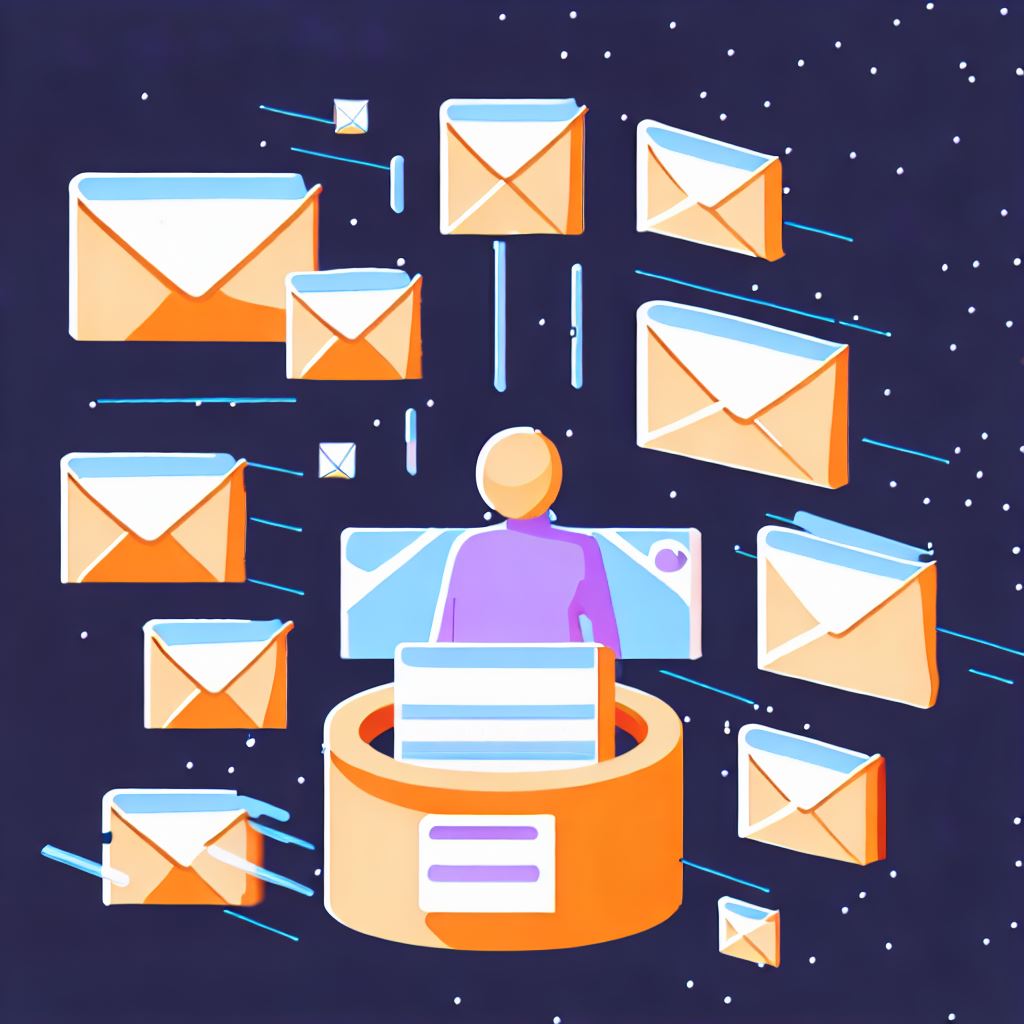Email marketing is a formidable force in the world of marketing. Its unparalleled ability to reach a wide audience, engage customers, and drive conversions makes it a cornerstone of successful digital marketing strategies. However, to harness this power effectively, one must delve into the nuances of list segmentation.
List segmentation is the secret sauce that transforms ordinary email campaigns into highly targeted, personalized experiences. It involves categorizing your email subscribers into distinct groups based on various criteria, such as demographics, behavior, or preferences.
The segmentation allows you to send the right message to the right people at the right time, significantly increasing the relevance and impact of your email marketing efforts.
- Click here to preview verified prospect lists
Understanding Email List Segmentation
Email list segmentation is the practice of dividing your email subscribers into smaller, targeted groups based on specific criteria such as demographics, behavior, or preferences.
1. Benefits of Segmentation for Email Marketing
- Higher Engagement: Segmented emails often have higher open and click-through rates because they cater to the unique interests of each group.
- Improved Conversion Rates: Targeted content leads to more conversions, whether it’s making a purchase, signing up for a webinar, or downloading an eBook.
- Enhanced Customer Retention: Segmentation helps nurture customer relationships by delivering content that keeps subscribers interested and coming back for more.
- Better ROI: When you send the right message to the right people, you get more value from your email marketing efforts.
2. Common Challenges and Misconceptions
- Data Quality: Maintaining clean and accurate subscriber data can be challenging. Ensure data hygiene to prevent sending emails to incorrect or outdated addresses. To ensure data quality, you can buy an email list from a lead generation data provider.
- Over-segmentation: While segmentation is powerful, excessive segmentation can lead to a complex email marketing strategy that’s hard to manage. Balance is key.
- Misunderstanding Segmentation Criteria: Choosing the wrong segmentation criteria can lead to irrelevant messaging. Research and analyze your audience to segment effectively.
- Ignoring Segmentation: Many businesses still send generic, one-size-fits-all emails. Not leveraging segmentation is a missed opportunity to improve results.
The significance of data for a proper email segmentation
Data forms the backbone of successful email segmentation. It allows marketers to understand their audience on a deeper level and tailor their messages accordingly.
- Click here to preview verified prospect lists
Without data, segmentation remains a shot in the dark, but with it, you can achieve precision and relevance in your email campaigns. Types of Data for Segmentation:
-
Demographic Data
Demographic data includes information like age, gender, location, income level, and occupation. It provides a fundamental understanding of your subscribers’ characteristics, helping you create segments based on who they are.
-
Behavioral Data
Behavioral data tracks how subscribers interact with your emails and website. It encompasses actions such as email open rates, click-through rates, products viewed, items added to the cart, and past purchase history. This data helps you segment subscribers based on their actions and interests.
-
Psychographic Data
Psychographic data delves into subscribers’ lifestyles, interests, values, and attitudes. It provides insights into their motivations and preferences, allowing you to craft messages that resonate with their unique mindsets and psychologies.
A guide to segmenting your email list for better targeting
1. Creating Segmentation Frameworks
Segmentation frameworks offer versatility and precision in your email marketing campaigns. These approaches help ensure your messages are timely and highly relevant to your audience.
-
Single-Factor Segmentation
Single-factor segmentation involves dividing your email list based on one specific criterion, such as location, age, or purchase history. If you run a global e-commerce store, you might segment your list by location to send region-specific promotions or product recommendations.
-
Multi-Factor Segmentation
Multi-factor segmentation goes beyond one criterion and combines multiple factors to create highly targeted segments. It considers factors like demographics, behavior, and purchase history simultaneously.
You could create a segment for young, male customers who have made recent high-value purchases, ensuring your messages align with their unique profile.
Click here to preview verified prospect lists
-
Dynamic Segmentation
Dynamic segmentation involves real-time adjustments based on a subscriber’s behavior and preferences. It ensures that subscribers are always in the most relevant segment.
If a subscriber’s behavior changes—such as increased engagement or a location change—dynamic segmentation ensures they receive emails tailored to their updated status.
2. Building Customer Personas
Start by identifying the essential characteristics that define your customers. These may include demographics like age, gender, and location, as well as psychographic factors like interests and values.
Once you have gathered the key attributes, craft detailed buyer personas. These are fictional representations of your ideal customers, helping you understand their needs, pain points, and preferences.
3. Segmentation Based on Demographics
Demographic segmentation involves dividing your email list based on tangible attributes like age, gender, location, income, and more. This approach allows you to tailor your content to specific demographic groups.
4. Behavioral Segmentation
- Purchase History: Analyze your customers’ past purchase behavior. Segment your list based on factors like frequency, recency, and monetary value of purchases to send targeted promotions.
- Website Interactions: Track how subscribers interact with your website. Segment based on page visits, product views, or abandoned carts to send relevant follow-up emails.
- Email Engagement: Segment subscribers based on their interaction with your emails. Identify those who consistently open, click, and convert, and separate them from less engaged subscribers for tailored messaging.
Click here to preview verified prospect lists
5. Psychographic Segmentation
Understand the psychological aspects of your audience. Segment based on lifestyle choices, hobbies, interests, and values to create emotionally resonant content.
6. Segmenting by Customer Lifecycle Stage
Tailor your messaging based on where subscribers are in their customer journey. New subscribers may need nurturing, while loyal customers may appreciate exclusive offers.
7. Dynamic Content and Automation
Use dynamic content that changes based on the recipient’s attributes or behavior. Personalize product recommendations, offers, and messaging to match each segment’s preferences.
Set up automated triggers, like welcome emails for new subscribers or re-engagement campaigns for inactive customers, to keep your list segmented and engagement high.
8. A/B Testing for Segment Optimization
Continuously optimize your segmentation strategies by conducting A/B tests. Experiment with different criteria and content to identify what resonates best with each segment.
- Click here to preview verified prospect lists

Challenges and Pitfalls to Avoid
1. Common Mistakes in Email List Segmentation
Email list segmentation, while powerful, is not without its challenges. Here are some common mistakes to avoid when implementing segmentation strategies:
-
Ignoring Data Quality
The foundation of effective segmentation is accurate and up-to-date subscriber data. Neglecting data quality can result in sending messages to incorrect or outdated addresses, leading to wasted efforts and potential reputation damage.
-
Not Regularly Updating Segments
Subscriber preferences and behaviors evolve. Failing to refresh your segmentation criteria can lead to sending irrelevant messages. Regularly update segments to ensure your content remains aligned with your audience’s needs and interests.
-
Being Too Generic
Creating overly broad segments can dilute the impact of personalization. When segments are too general, the messages you send may not resonate with recipients. Effective segmentation involves finding the right balance between specificity and relevance.
2. Over-Segmentation vs. Under-Segmentation
Achieving the ideal level of segmentation is a delicate balancing act. Here’s a closer look at the challenges associated with both over-segmentation and under-segmentation:
-
Over-Segmentation
While segmentation is beneficial, creating too many segments can lead to complexity. Managing an intricate web of segments can become overwhelming, potentially diminishing the overall impact of personalization. It’s crucial to strike a balance between granularity and manageability.
-
Under-Segmentation
Failing to segment adequately can result in sending generic messages to your entire email list. This approach may overlook important differences in subscriber preferences, leading to lower engagement and conversion rates.
Click here to preview verified prospect lists
Measuring and Analyzing Segment Performance
Measuring and analyzing segment performance not only helps you understand what works best for each audience but also enables you to optimize your email marketing strategy for better results over time.
1. Defining Key Performance Indicators (KPIs) for Each Segment
To gauge the success of your segmented email campaigns, it’s crucial to establish specific KPIs for each segment. KPIs may include open rates, click-through rates, conversion rates, and even more specific metrics like revenue generated or lead-to-customer conversion rates.
2. Monitoring Open Rates, Click-Through Rates, Conversion Rates
- Open Rates: Track how many recipients open your emails within each segment to assess engagement and subject line effectiveness with click-to-open rates.
- Click-Through Rates: Measure the percentage of users who click on links within your emails to gauge content relevance and call-to-action effectiveness.
- Conversion Rates: Assess how well each segment converts, whether it’s making a purchase, signing up for a webinar, or completing another desired action.
3. Iterative Improvements Based on Performance Data
Use the performance data to iterate and refine your email campaigns. Experiment with different subject lines, content, and calls to action to boost segment performance.
Employ A/B testing within each segment to determine what resonates best with your subscribers. Based on performance, consider adjusting segment criteria to create more effective and relevant groups.
- Click here to preview verified prospect lists
Future Trends in Email List Segmentation
1. Advances in AI and Machine Learning for Predictive Segmentation
The future of email list segmentation holds exciting possibilities with the integration of AI and machine learning. Here’s a glimpse into what’s ahead:
-
Predictive Analytics
AI and machine learning algorithms are becoming increasingly sophisticated in their ability to analyze vast datasets. It will enable marketers to predict subscriber behavior more accurately. Predictive segmentation will identify potential high-value customers, allowing for proactive targeting and customized content.
-
Behavioral Insights
AI-driven analysis can uncover intricate patterns and trends in subscriber behavior. This means marketers will be better equipped to create segments that align with subscribers’ real-time preferences and actions. As AI evolves, expect more precise and actionable insights into your audience.
2. The Integration of Segmentation with Other Marketing Channels
The future of email list segmentation goes beyond just emails. Integration with other marketing channels will be a pivotal trend:
-
Omnichannel Marketing
Seamlessly integrating email list segmentation with other marketing channels, such as social media, SMS, and push notifications, will become standard practice. It ensures a consistent and cohesive brand message across various touchpoints.
Click here to preview verified prospect lists
-
Customer Journeys
Future segmentation strategies will focus on creating holistic customer journeys. It means understanding how subscribers interact with multiple marketing channels and optimizing the user experience accordingly. Integrated segmentation will play a central role in orchestrating these journeys.
Conclusion
Email list segmentation is like having a special tool. It helps you understand your audience better and send them messages that make sense to them. It isn’t just about marketing strategy; it’s about building trust with your audience.
- Click here to preview verified prospect lists
Remember that using segmentation isn’t just about splitting up your list; it’s about making real connections with your audience, understanding what they like, and giving them what they want. It’s your guide to the ever-changing world of digital marketing, making things simpler and smarter.
